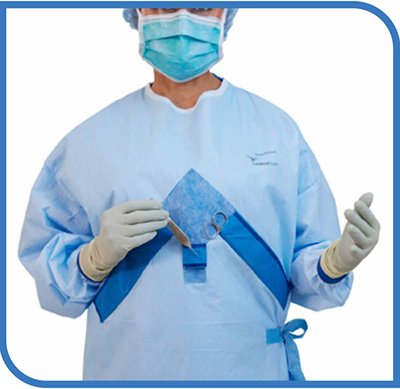National hospital safety rankings reflect infection prevention, patient experience improvements

Editor's Note Released May 1, the most recent Leapfrog Group hospital patient safety grades reflect declines in preventable healthcare-associated infections and improvements in patient’s hospital experiences since fall 2023. Leapfrog, a nonprofit, releases its Hospital Safety Grades report biannually, assigning traditional letter grades to nearly 3,000 general hospitals based on…
Researchers develop fast, accurate blood test for sepsis, septic shock

Editor's Note A new blood test developed by researchers in Australia could help diagnose sepsis and septic shock in just one hour, compared to the current multi-day methods. The Journal of Proteome Research reported the findings on March 21. Researchers collected blood plasma samples from 152 ICU patients. They used…
FDA approves new antibiotic for staph, other infections

Editor's Note The US Food and Drug administration approved Zevtera for treating Staphylococcus aureus bacteremia (SAB) bloodstream infections, which are often acquired in healthcare settings. In the April 3 announcement, the agency notes the new antibiotic Zevtera (ceftobiprole medocaril sodium for injection) is effective for SAB-infected patients with right-sided infective…
ChatGPT, Mixtral AI systems show promise in detecting healthcare-associated infections

Editor's Note Based on the performance of two specific systems in detecting healthcare-associated infections (HAIs) in a recent study, artificial intelligence (AI) could help providers enhance surveillance, streamline tasks, and free staff to focus on patient care. Published March 14 in The American Journal of Infection Control, the study assessed…
Blood test could help identify risk of sepsis, organ failure in children

Editor's Note Measuring gene activity in blood samples could help determine whether a child is at risk of sepsis and organ failure, according to findings published March 18 in The Lancet Child & Adolescent Health. It is often difficult for clinicians to diagnose sepsis because the symptoms are similar to…
Breaking down the surgical gown: Disposable versus reusable, latest innovations

There is movement happening in the world of surgical gowns. It is driven in part by the COVID-19 pandemic, which brought new focus to the need for adequate stockpiles of personal protective equipment (PPE)—and for PPE that works as intended. Staff need to know their gowns incorporate the latest technology…
Surgeons design implant coating to combat infections

Editor's Note: A point-of-care, antimicrobial coating for orthopedic implants could soon make implant-associated infections a problem of the past, UCLA Health reported on January 3. Developed by two UCLA surgeons, the coating is designed to kill or slow the spread of micro-organisms in order to prevent post-surgical infections. According to…
Study: Hospital surfaces ridden with bacteria despite disinfection protocols
Editor's Note: Adherence to routine disinfection procedures may not be enough to prevent potentially harmful bacterial contamination of high-touch hospital surfaces, according to findings published January 10 in the American Journal of Infection Control. Manikins, bed rails, and workstations-on-wheels were the most contaminated surfaces. The study involved sampling and culturing…
Emerging pathogens widespread in mechanical ventilators
Editor's Note Patients in Maryland hospitals on mechanical ventilators were exposed to two dangerous pathogens, which are becoming growing threats in hospital systems, according to a new report published on October 12 by JAMA Network. The report analyzed survey data from 51 participating healthcare facilities. The data included 482 patients…
SHEA updates CAUTI prevention recommendations
Editor's Note An update of the 2014 “Strategies to Prevent Catheter-Associated Urinary Tract Infections [CAUTIs] in Acute-Care Hospitals” was published August 25 by the Society for Healthcare Epidemiology of America (SHEA). The update, which is a collaborative effort led by SHEA, the Infectious Diseases Society of America, the Association for…

 Free Daily News
Free Daily News